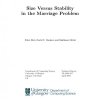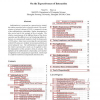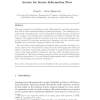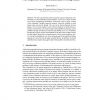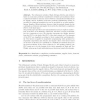TCS
2010
13 years 7 months ago
2010
TCS
2010
13 years 7 months ago
2010
TCS
2010
13 years 7 months ago
2010
Subbisimilarity is proposed as a general tool to classify the relative expressive power of process calculi. The expressiveness of several variants of CCS is compared in terms of t...
TCS
2010
13 years 7 months ago
2010
This paper presents an embedded security sublanguage for enforcing informationflow policies in the standard Haskell programming language. The sublanguage provides useful informat...
TCS
2010
13 years 7 months ago
2010
Abstract. We study a general class of non-cooperative games coming from combinatorial covering and facility location problems. A game for k players is based on an integer programmi...
TCS
2010
13 years 7 months ago
2010
TCS
2010
13 years 7 months ago
2010
The refinement calculus of Back, Morgan, Morris, and others is based on monotone predicate transformers (weakest preconditions) where conjunctions stand for demonic choices betwee...
TCS
2010
13 years 7 months ago
2010
We compare how computational effects are modelled in Classical Domain Theory and Topological Domain Theory. Both of these theories provide powerful toolkits for denotational sema...
TCS
2010
13 years 7 months ago
2010
We present some decidability and undecidability results for subsets of the BlenX Language, a process-calculi-based programming language developed for modelling biological processe...
TCS
2010
13 years 7 months ago
2010
When representing DNA molecules as words, it is necessary to take into account the fact that a word u encodes basically the same information as its Watson-Crick complement θ(u), w...
